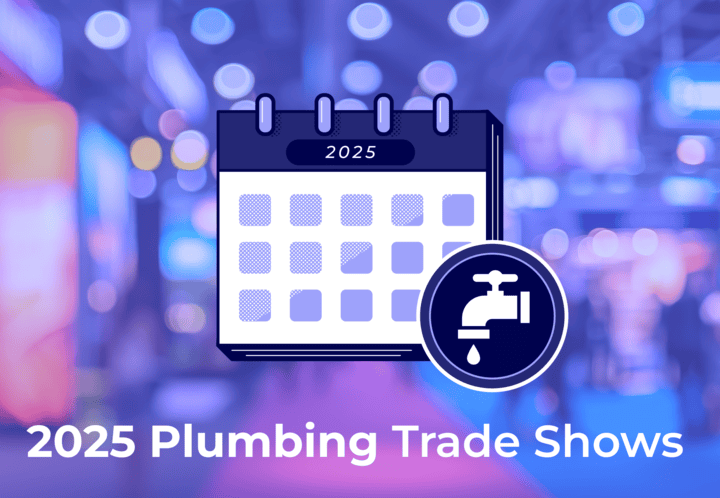Plumbing Takeoff
Aug 16, 2024

Takeoffs are essential for estimating your costs and calculating profits. Factors such as valves, fixtures, and property lines can also impact the price of a job. To get an accurate estimation for plumbing services when you bid a plumbing job , it's essential to learn how to estimate jobs from plumbing takeoffs and have the right business software to streamline the process.
What Is A Plumbing Takeoff
A plumbing takeoff is a drawing that shows the layout of a house's plumbing system and the fixtures it contains. It can also be used for additions to an existing home since the new house may have different needs than the old one. Takeoff blueprints provide you with accurate costs for your plumbing jobs which can help plan the overall cost of supplies before starting work.
A plumber will be able to create an itemized list of the materials, equipment, and labor needed for a plumbing project or repair from a takeoff.
Obtaining Plumbing Blueprints
The first step is to collect all of the necessary information that you'll need for the plumbing project to get started. You'll need a full setup of plumbing blueprints and the general blueprints and plans for the entire project.
That might seem like an unnecessary extra cost, but there are often discrepancies between the architectural drawings and the plumbing outlines.
A building project – especially new construction – tends to mean a lot of cooks in the proverbial kitchen. So it's crucial to compare blueprints and inquire with the client about any discrepancies.
Furthermore, it's critical you see the Architectural Drawings since these supersede any other drawings and blueprints in terms of authority.
Trade drawings are the lowest order from a legal standpoint, so if you don't check the work you're going to perform against the expectations in the architectural drawings, you could be on the hook for the discrepancy.
On the whole, you'll likely want a copy of the site plan, architectural drawings, construction drawings with general notes and conditions, demolition drawings if applicable, and mechanical drawings, all in addition to your plumbing drawings.
That way, you see the entire picture of the job before you start to make bidding for that job a reality.
A quick note: Obviously, all of this printing can add up quickly, but in some ways, that's a good thing. In addition to simply being part of the business as it runs, the hurdle of obtaining and printing these drawings should give you pause to only go after those contracts you're seriously qualified for. That way, no one's time is wasted.
With those plans in hand for your plumbing bid, you'll want to create a full plumbing takeoff and pricing sheet.
What Does Take-Off Mean In Plumbing?
A takeoff is simply a precise accounting of all the material you'll need for the job, as well as prospective workers and any special limitations or considerations related to the job. Think of it as an estimate on steroids.
How Do You Do Plumbing Takeoffs?
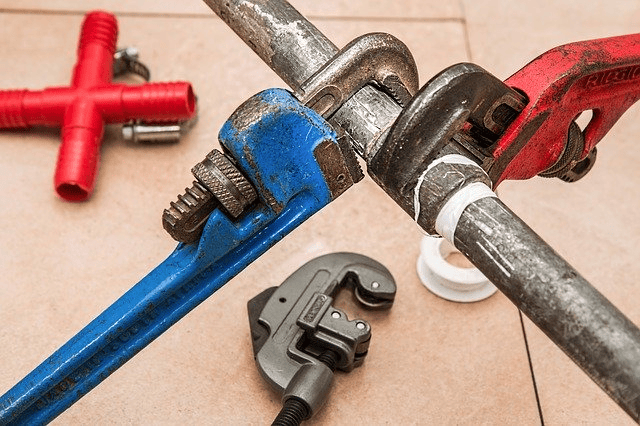
With the plumbing blueprints in hand, page down to the plumbing notes section to see what the designers and architects had in mind for your bid. These are likely to be incomplete in the sense that these folks aren't plumbing professionals and will likely have missed key questions or considerations.
Make notes on the notes as you develop your bid. This will not only help you in the long run but prove your professionalism and expertise to your potential new client.
A tried and true method for working on your takeoff and the pricing sheets that go alongside it is to use colored pencils on your printed plans to measure and label all the runs of pipes, fittings, and other equipment you'll need (sinks, fixtures, sprinkler parts, etc.). Measure the lengths you'll need and plug your calculations into your cost estimator.
Plumbing apps and plumbing calculators can also help you accomplish this, but many plumbers still prefer the pencil-and-paper approach.
One thing to be particularly aware of is anything in the plans that seems out-of-the-ordinary. Special sensors, custom fixtures, and non-standard materials are just a few.
These could require specialists to install or increase your cost runs, so it's critical to identify these items so you can review them with the client if you get to that stage. You are also more than welcome to ask them about it during the bid process. At the minimum, note any exceptional requirements and build in variable pricing upfront.
How Do You Calculate Plumbing Takeoffs?
What you identify in your takeoff will also shape your pricing estimates for materials and crew and the equipment you might need to rent to install a particular water line or drain, for instance.
- Gather estimates for materials, such as pipe, fittings, valves, drains, fixtures, etc., as well as other necessary items such as sand or gravel for drainage purposes.
- Take measurements of all existing piping or fixtures to determine if they'll need replacement or additional parts. You should also consider any unusual features, such as unusually steep slopes or unusually deep foundations, which might require extra materials or labor.
- Estimate Costs. After you have gathered all of the necessary information, you should be able to make a list of your needs and estimate the cost of each item. If you need any additional information, you can always contact your main contractor or subcontractors for more details.
- Compare Drawings. As you finish your takeoff and materials estimation, make sure to compare the plumbing drawings you're marking up against the architectural and mechanical drawings. The goal here is to catch anything you might have overlooked.It's a good idea to get a fresh pair of eyes as well. Grab a fellow worker from the job site to look at your bid sheet and try to spot any discrepancies between the drawings that need clarification or unique challenges.
Plumbing Material Takeoff List
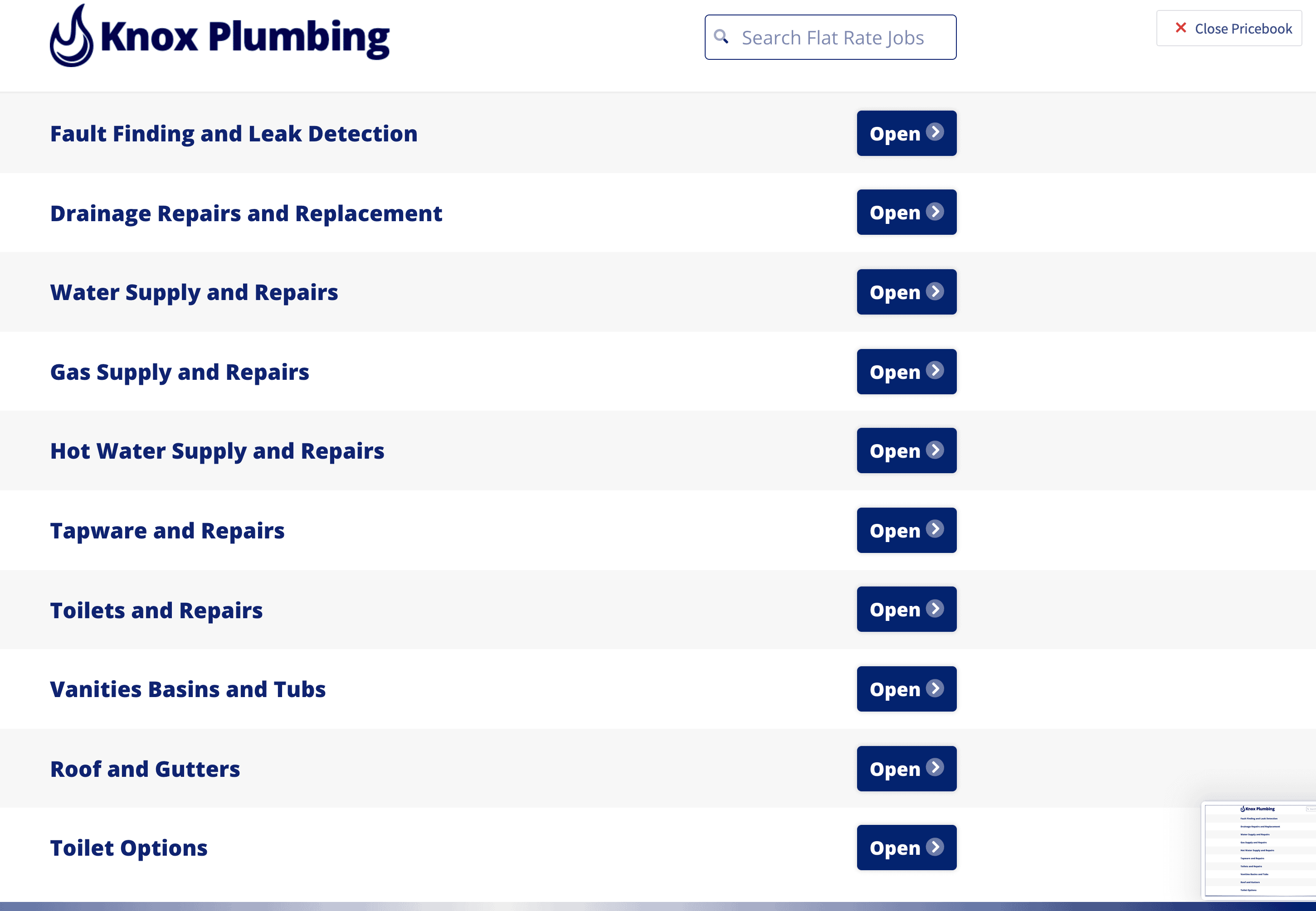
You'll want to methodically take all the materials you've marked up and put them into a spreadsheet where you can price the inventory, labor, and other associated costs individually. This is where you will build in your profit margin as well as any slush to cover the unexpected and inevitable cost overruns (especially important on a job where you're on the hook for those).
Pro-Tip: One great piece of advice on large building jobs is to add a two percent increase in labor costs for each floor above the fourth.
Plumbing Pricebook Template
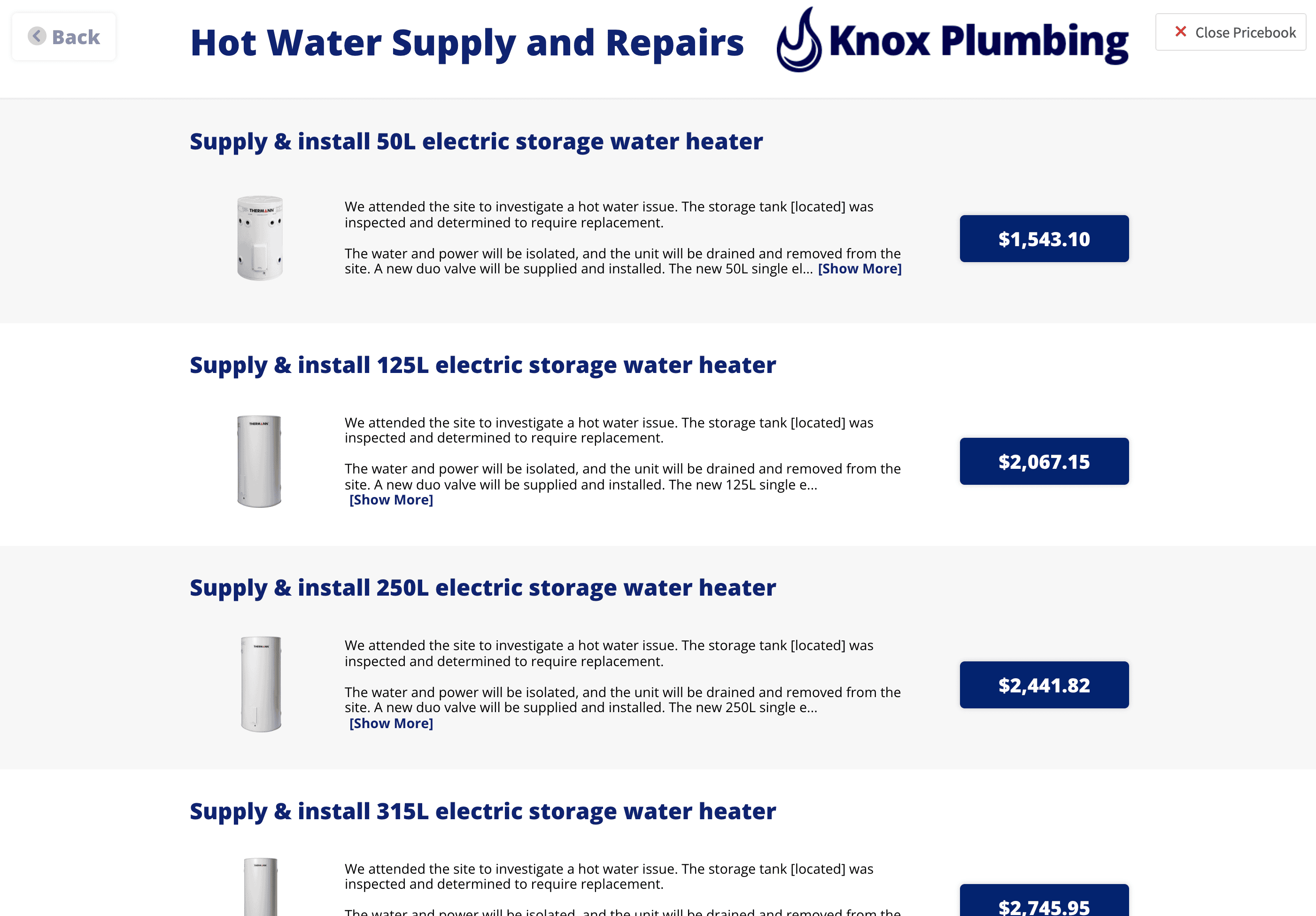
Want to speed up your plumbing business' bidding process? Create a pricebook you can reference with labor costs, plumbing materials, and markups to account for overhead expenses. This will save time because the next time you need to bid a job, you can simply take your list of all the piping, plumbing fixtures, water lines, and other materials necessary for the job and put them directly inside your takeoff software or estimating app to calculate costs. You'll get more accurate estimates and be able to churn out complex bids for consideration faster.
Download FieldPulse's free pricebook template below to get started.
Should you decide to use FieldPulse's plumbing estimating software , you can upload your pricebook directly inside the app's invoice item repository to pull items directly into invoices and estimates.
Alternatively, you can create detailed pricebooks complete with photos, descriptions, and more with FieldPulse's Pricebook feature!
Plumbing Estimate
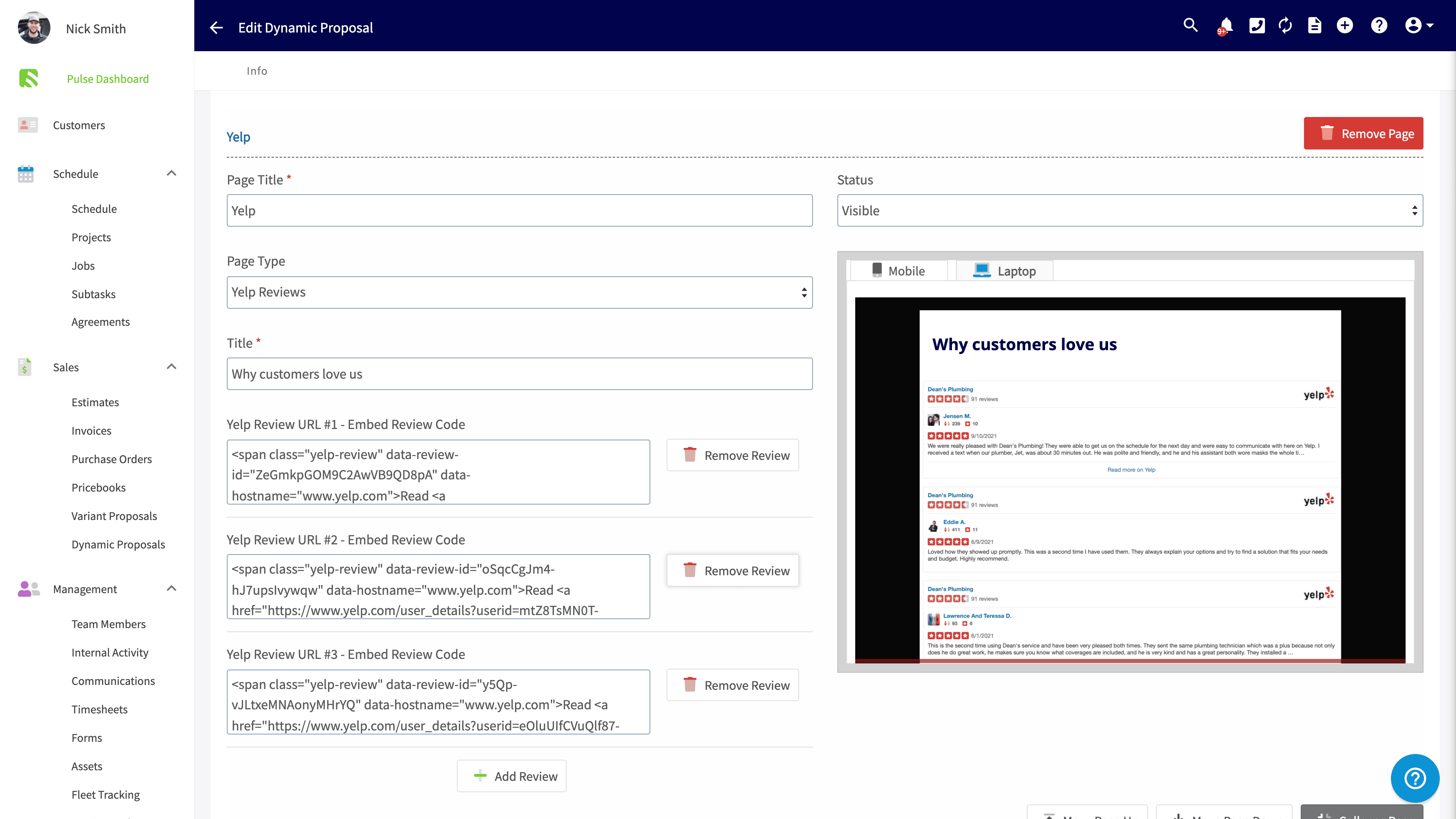
After you've finished your calculations, you'll want to put it all together in a plumbing estimate or bid to present to clients.
Need to create a more complex proposal? FieldPulse's estimating software can help. After completing: your estimate, you can use dynamic proposals to easily create complex, professional proposals from pre-made templates that include everything, including about us pages, reviews, pricing options, photos of previous projects, and more.
Plumbing Estimate Template
Not quite ready to take the plunge with estimating software? We've included a free plumbing estimate template below you can use after you finish takeoff.
Plumbing Estimating Software
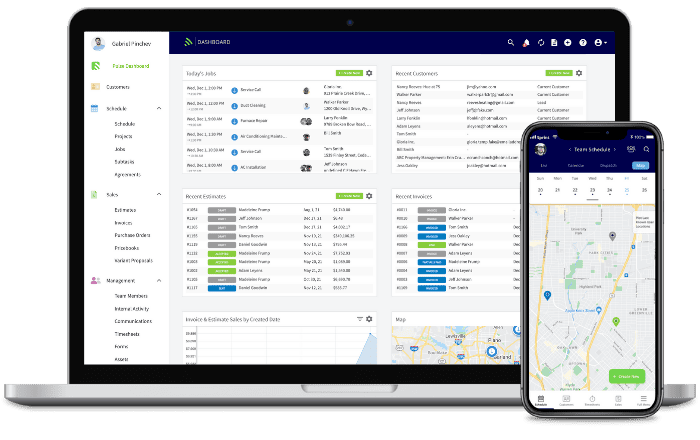
FieldPulse's plumbing estimating software can help you calculate plumbing takeoff quickly and track projects with ease. FieldPulse streamlines the takeoff process to save you time and boost productivity by storing costs, customer information, and pr
oject information. That way, plumbing contractors can craft detailed, accurate estimates faster than ever. Schedule jobs take payments, present good, better, best options, and more.
Learn more about FieldPulse's plumbing estimating software and its full suite of features by scheduling a demo to explore FieldPulse at your own pace.
How much will you grow?
See how FieldPulse can take your business further.

